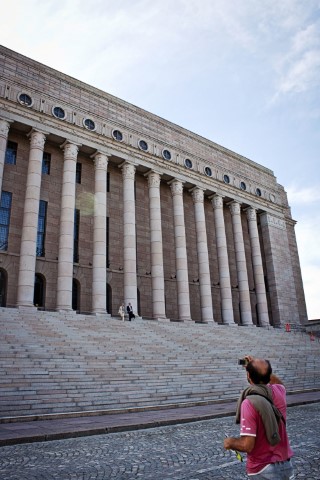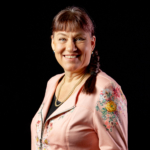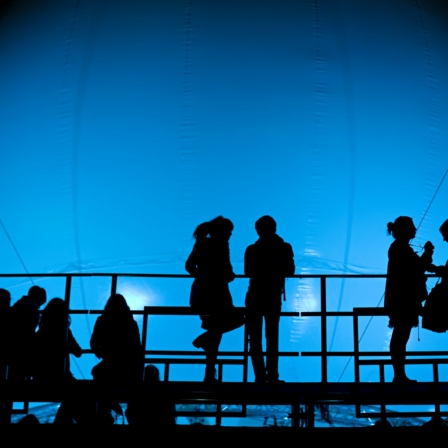The preparations for the Government Programme have now progressed to the formulation of an economic programme. There is a desperate need for a new solution that will break old ways of thinking, especially when it comes to developing the economy. But are the parties open-minded enough? Are old paradigms keeping them from having a genuine dialogue?
During the ongoing government negotiations, the format and drafting process of the programme has been radically renewed. Instead of being broad and detailed, the parties are aiming for a strategic government programme that has also been proposed by Sitra and that will be complemented later by a more detailed action plan. According to its strategic goals, the government wants, among other things, to remove unnecessary bureaucracy and to encourage experimental development work. Thus far, the government negotiators have been in dire need of solutions for renovating operating models.
Amid depressing financial figures, the financial debate in society focuses particularly on the future of the eurozone and the increasing public debt – the discussion emphasises the demands of economic sustainability and the control of public debt, competitiveness and economic growth.
The concept of the economy seems to have receded out of reach for ordinary people. The discussion on sustainable economy is based mostly on scientific economic paradigms. However, economic sciences have produced several competing theory frameworks throughout history, and their popularity seems to vary in cycles. There is talk about neoclassical economics, neo-Keynesian and post-Keynesian economics, Austrian theories, institutional economics, etc. The theories can be used as a base from which to derive various political recommendations. Thus, the prevailing thinking patterns have a tremendous influence on the way monetary, financial and fiscal policies are conducted.
Even though the discussion around economic sustainability is necessary, it shouldn’t supersede society’s other long-term goals, ecological and social sustainability. The economy is not a separate area but rather a central system linking people in society, in which different resources are produced, exchanged, distributed and consumed. This process always has economic, ecological and social effects on the rest of society.
If Einstein was right, it’s possible that “we cannot solve our problems with the same level of thinking that created them”. That is why the economy needs to be viewed from a broader perspective. According to Sitra’s Vision for Finland, our economic structures need to be reformed so as to generate comprehensive well-being without overstepping the earth’s carrying capacity. In economic thinking, crucial things include not only the internal dynamics of the economy, but also the relationships between the economy and well-being as well as between the economy and environment.
How to solve the paradigm problem?
During Sitra’s sixth leadership course on sustainable financial policy that started in May, the participants were given a paradigm problem to solve on the first day. The course participants were shown a number of statements, among which they had to choose the one best suited to their own opinion. They were asked, among other things, whether they believed in the possibility of continual growth or the probability that solving environmental problems will stop economic growth or reduce it, at least for some time. Should economic policy focus more on green growth or on building an economic system that stays competitive even during economic decline? When making sure that human activity stays within the limits allowed by the natural environment, is it a task for environmental policy only or also economic policy?
After making their choices, the participants formed groups with like-minded people and discussed why this particular statement appealed to them. The opinions were expressed publicly only after this. The exercise produced both insights and surprises: I thought green economy meant the same thing as green growth! Me, a degrowth thinker?
The exercise was based on a map detailing the relationship between the economy and the environment. The map was created for Sitra by Timo Järvensivu from Aalto University. The opinions were examined using two different scopes. The statements varied according to the factor that is more crucial to well-being: economic activity or natural resources. In addition, the opinions were divided into different groups according to how optimistic or pessimistic people are about the possibility of separating economies from harmful environmental effects.
Among the government’s strategic goals, economic and environmental goals have been combined under the development of bioeconomy and clean solutions. The aim is to improve our current account and self-sufficiency as well as to create new jobs by developing, implementing and exporting sustainable solutions. At the same time, we would reach our environmental goals and improve the ecological condition of the Baltic Sea, for example.
According to the government’s goals, economic activity is more crucial to human well-being than the resources offered by natural environments. The goals also allow one to assume that the government strongly believes in the ability to detach economic growth from harmful environmental effects forcefully and quickly enough to prevent the escalation of environmental problems. This is not surprising, because the outlook corresponds to the “green growth” ideology that was also strongly represented among the students Sitra gathered from different spheres of society. However, among the course’s decision-makers, many participants thought that even when aiming for green growth, society should also be prepared for a situation in which the economy still does not grow. So, it’s important to keep thinking about solutions even in a society that aims for green growth.
Sitra’s exercise focused on the relationship between the economy and the environment. Next, the course intends to map the different thinking patterns related to the relationship between the economy and well-being. Maybe then the course participants will get the chance to test how close their thinking is, for example, to welfare economy, participation economy, sharing economy or perhaps solidarity economy. More information on these and other new forms of economic thinking and activity can be found in the report Bubbles, turmoil and utopias (in Finnish), written for Sitra by Ajatushautomo Tänk.
The course’s discussions on paradigms were not meant to prove that one thinking pattern is better than the others. The objective was to help the participants to identify underlying issues in their thinking and to understand that people can think very differently about topics and still have reasonable justifications. That is the only way to discuss economics openly and with respect for different opinions.
If ever, now is the time to discuss the economy thoroughly in an open atmosphere. The discussion should cover daily decision-making in economic policy as well as developing the entire economic system.




Recommended